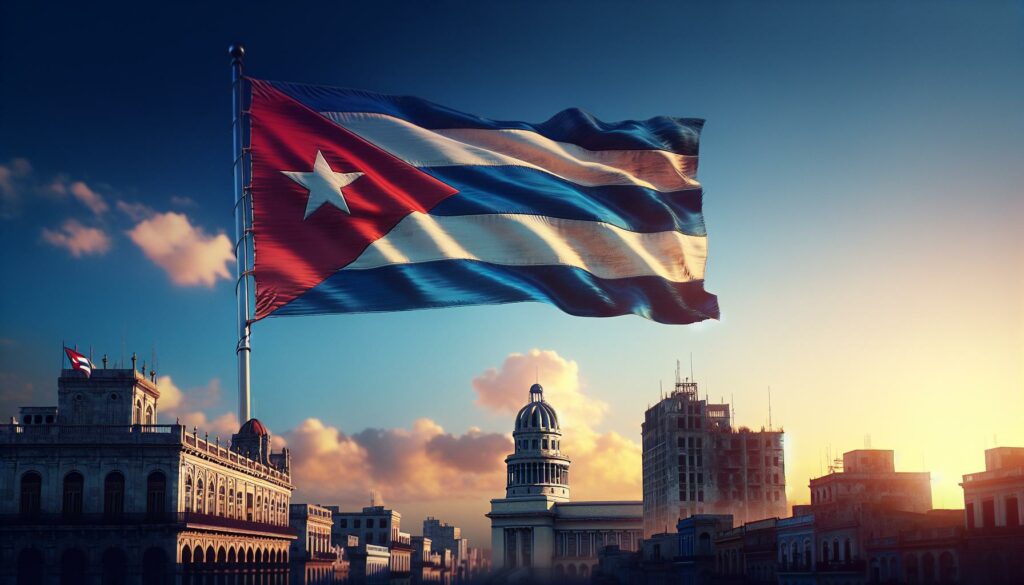When I think of Cuba, vibrant colors and rich culture come to mind. The island is a treasure trove of history, art, and music, but there’s something else that captivates me—the unique symbols that represent its identity. One such symbol is the bandeira, a term that encapsulates the essence of Cuban heritage and pride.
Exploring the bandeira offers a glimpse into Cuba’s soul, revealing stories of resilience and unity. It’s not just a flag; it’s a representation of the island’s spirit and its people’s journey. In this article, I’ll dive into the significance of the bandeira, its historical roots, and what it means to Cubans today. Join me as we uncover the layers of meaning behind this powerful emblem.
Key Takeaways
- Symbol of Cuban Identity: The bandeira represents the essence of Cuban heritage, signifying unity and resilience among its people.
- Historical Significance: Rooted in Cuba’s independence movements, the bandeira evolved to reflect the island’s rich history and cultural heritage, using colors that symbolize bravery, purity, and justice.
- Cultural Influence: The bandeira plays a pivotal role in fostering national pride and identity through public celebrations, educational initiatives, and community gatherings.
- Impact on Art and Music: The bandeira inspires Cuban artists and musicians, becoming a recurring theme that conveys messages of hope, struggle, and social justice across various creative expressions.
- Modern Interpretations: Contemporary adaptations of the bandeira showcase its versatility, with artists and fashion designers incorporating its symbols into modern aesthetics to resonate with younger generations.
- Future Outlook: As Cuba embraces globalization, the bandeira’s significance will likely evolve, facilitating connections with international communities while preserving its traditional roots in Cuban culture.
Bandeira:yst_jtedjgi= Cuba
Bandeira:yst_jtedjgi= Cuba represents a key symbol of Cuban identity, encapsulating the nation’s spirit. It signifies unity and the resilience of the Cuban people, reflecting their rich historical narrative. The design features colors and elements that resonate with the island’s cultural heritage. These attributes reinforce a sense of pride among Cubans, both locally and in diaspora communities.
Historically, the bandeira traces its roots to independence movements, symbolizing the struggle for freedom. The colors red, white, and blue used in the bandeira convey messages of bravery, purity, and justice. These symbolic associations foster a strong emotional connection among citizens.
Contemporary interpretations of the bandeira continue to inspire artistic expressions and cultural celebrations. Its presence in events underscores its significance, reminding Cubans of their collective past and aspirations for the future. Understanding bandeira:yst_jtedjgi= Cuba enriches appreciation for the island’s heritage and ongoing narrative, marking it as a powerful emblem of national pride.
Historical Context
The bandeira embodies Cuba’s rich history and symbolizes the journey of its people. Understanding its evolution reveals the complexities of Cuban identity and culture.
Evolution of Bandeira in Cuba
The bandeira’s evolution reflects shifts in Cuban society and politics. Initially, the bandeira represented aspirations for independence during the 19th century. Over time, its design underwent modifications, incorporating elements that resonate with the island’s diverse heritage. Each iteration captured the sentiments of various historical moments, from colonial struggles to revolutionary movements. Today, the bandeira stands as both a historical artifact and an evolving symbol that embraces the contemporary cultural landscape.
Key Events Influencing Bandeira’s Development
Several key events significantly influenced the bandeira’s development:
- War of Independence (1868-1898)
The fight against Spanish colonial rule redefined national symbols, elevating the bandeira as a sign of unity. - Cuban Revolution (1953-1959)
The revolution solidified the bandeira’s role as a symbol of anti-imperialism, incorporating new ideological meanings. - Exile and Diaspora Movements (Post-1959)
Cuban exiles utilized the bandeira to maintain cultural identity abroad, adapting its representation to reflect their experiences. - Cultural Festivals and Celebrations
Annual festivities, such as Carnaval, highlight the bandeira, integrating traditional and contemporary interpretations that celebrate Cuban heritage.
Each of these events shaped the bandiera’s narrative, ensuring its ongoing relevance in Cuba’s national identity.
Cultural Significance
The bandeira stands as a powerful symbol in Cuban culture, reflecting the island’s unique identity and history. Its influence permeates various aspects of Cuban society and artistic expressions.
Bandeira’s Role in Cuban Society
The bandeira:yst_jtedjgi= cuba plays a pivotal role in fostering national unity and pride among Cubans. It appears prominently in public spaces, during national holidays, and at cultural events, serving as a reminder of the collective struggles and achievements of the Cuban people. Community gatherings often feature the bandeira, reinforcing bonds among individuals and celebrating shared heritage. In educational settings, the bandeira educates the younger generation about Cuba’s history and values, ensuring that the spirit of resilience continues to thrive.
Impact on Cuban Art and Music
The bandeira significantly shapes Cuban art and music, inspiring countless artists and musicians. Its colors—red, white, and blue—frequently appear in visual arts, symbolizing themes of struggle and hope. Artists use the bandeira’s imagery to convey messages of social justice and cultural pride. In music, the bandeira resonates through lyrics and performances, with various genres capturing its essence. Artists incorporate the bandeira into festivals, where traditional rhythms and modern interpretations merge, celebrating Cuban identity and heritage. The ongoing influence of the bandeira in creative expressions underscores its importance in preserving cultural narratives across generations.
Current Trends and Perspectives
The bandeira:yst_jtedjgi= cuba holds a dynamic place in contemporary Cuban culture, reflecting current trends and future outlooks. Its modern interpretations and anticipated significance shape the collective identity of the Cuban people.
Modern Interpretations of Bandeira
Modern interpretations of the bandeira exhibit versatility and creativity. Artists frequently incorporate the bandeira’s colors and symbols into paintings, murals, and digital art, portraying diverse narratives of Cuban life. Social movements often adopt the bandeira to advocate for justice, equality, and freedom, emphasizing its continued relevance. Fashion designers integrate bandeira motifs into clothing, celebrating heritage while appealing to younger generations. The bandeira also features prominently in music videos and performances, where artists express pride in Cuban culture and its historical context. Festivals and cultural events increasingly highlight the bandeira, showcasing innovative displays that merge traditional and contemporary themes. Each modern expression reinforces the bandeira’s significance, ensuring it resonates with Cubans at home and abroad.
Future Outlook for Bandeira in Cuba
The future outlook for the bandeira in Cuba appears promising, driven by an evolving cultural landscape. As Cuba embraces globalization, the bandeira’s role as a symbol of identity may adapt, fostering connections with international communities while preserving local traditions. Local artists and cultural organizations are likely to continue exploring new mediums and concepts that reflect Cuba’s dynamic identity. Educational initiatives may emphasize the bandeira’s importance, instilling its values in younger generations. Moreover, its depiction in popular culture and social media could amplify awareness of Cuban heritage, encouraging global discussions about the island’s history and aspirations. The bandeira will likely remain a focal point for expressions of national pride, uniting Cubans regardless of their geography.
The Soul of Cuba
The bandeira:yst_jtedjgi= cuba embodies the soul of Cuba and serves as a powerful reminder of its rich heritage. It’s more than just a symbol; it’s a testament to the resilience and unity of the Cuban people. As I reflect on its significance, I realize how deeply it resonates within the hearts of those who cherish their roots.
Whether in art, music, or community gatherings, the bandeira continues to inspire and connect generations. Its evolving meaning in contemporary society highlights the importance of preserving cultural identity while embracing change. I’m excited to see how the bandeira will adapt in the future, remaining a vibrant emblem of pride for Cubans everywhere.

